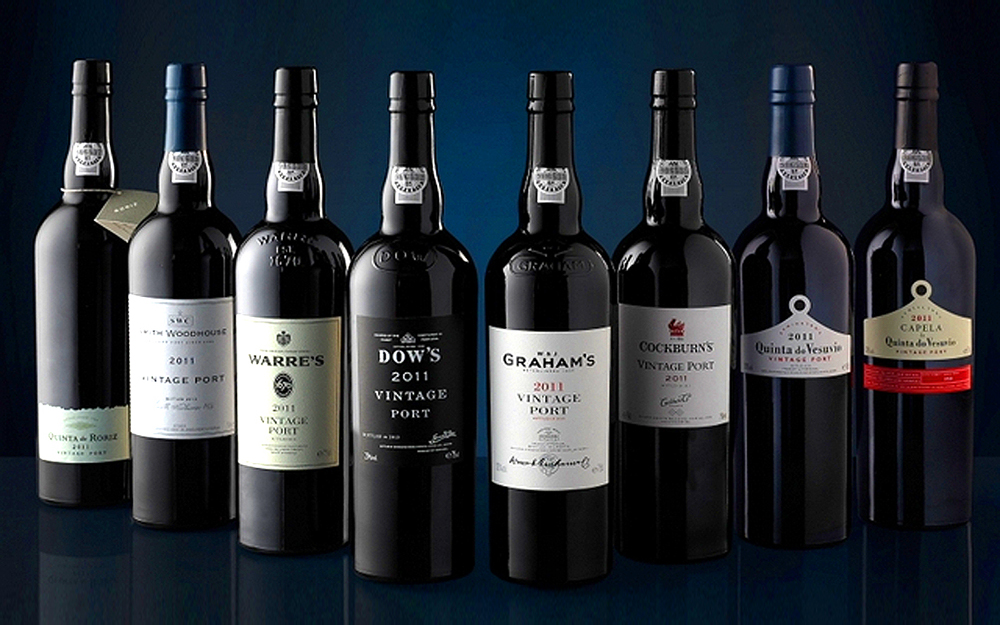
BY RICK RIOZZA
For toasts, aperitifs, comfort meals & desserts, the perfect holiday quaff is Vintage Port.
Most vino enthusiasts are still of the agreement that Port is one of the world’s greatest wines. Centered in its Duoro Valley, Portugal has been producing the stuff for over 3 centuries. It’s always been the classic dessert wine—yes, it’s certainly sweet, and, often sweet wines in general aren’t one’s cup of tea; Port, on the other hand, with all its complexities surrounding the sweetness, is always welcomed here.
Even though in the past 100 years or so its picked up a gravitas of pomp and stuffiness with traditional “British” mannerisms, the new Millennial wine fans don’t have as many preconceived notions about Port, so much more is possible—and they’re having fun drinking it when and where they wish, and, mixing it up big time with craft cocktails—such as the French Tonico—white Port and tonic water on ice with mint and citrus wedge.
Back in the mid-1980s, when both I and the new American vino community started to venture more into vintage wines, Vintage Port sales were also seeing an increase in sales. So much so that James Suckling, then of Wine Spectator Magazine, wrote an entire book in 1990 on it: Vintage Port—Ultimate Guide for Consumers, Collectors, and Investors.
The book is definitely dated but is still a good reference for the fabulous vintage Ports of the 20th Century. And that alone tells you that a great Port can age wonderfully; and, it’s a bona fide investment. I got caught up as well in the 80s wine investment fervor. Besides Bordeaux and Napa Cabs, I was at the various wine auction houses filling my wine cellar (okay—apartment) with vintage wines that only seasoned wine snobs owned.
Great Port vintages were still available such as the ‘45, ’63, ’70, ’77, and the ’85, and if you had a case or two of them, the market was fast moving and easy profits were available. In the mid-80s, the stellar 1963 Port vintage—powerful and might, was finally losing its tannic punch and all of its silky complexities were becoming spectacular.
Big famous port houses such as Taylor Fladgate, Dows, Grahams, and the like were already commandeering big auction prices of $1800 a case ($160 a bottle) with active bidding driving the prices even higher! For some reason, I played it cool and simply went for the ’63 vintage without the big name fanfare.
A case of Quarles Harris ’63 Port opened at only $100 a case! The wine snobs at the auction laughed it off. They hadn’t heard of Quarles Harris! (Neither had I) but I figured if 1963 was so great—how bad could this wine be. “Sold! at $100.” It was one of the best wine investments I’ve ever made—a little over $8 a bottle, selling at over $300 a bottle a few years later. When I had compared the Quarles to the Taylor Fladgate they were both the best one could imagine from world-class Port featuring notes of black cherries, chocolate, cinnamon, coffee, dates, dried fruits, figs, flowers, licorice, nutmeg, plums, raspberries, smoke, spices, and violets!
Another fun Port story: When I was transferring a case of 1935 Ramos-Pinot Vintage Port from my chilled apartment to a real wine cellar, (did I mention I got the collector’s bug?), the bottles were contained in a typical cardboard box, as opposed to a wooden crate as one would have expected. Anyway, unbeknownst to me, the box had become wet on the bottom. Unfortunately, when I was lifting the case from my Chevy truck, a bottle slipped through and broke right on the interior of the tail-gate.
Fortunately, the bottle broke clean and much of the wine fell into the large indentations of the Chevrolet lettering on the inside of the tailgate. Sure, there may have been a little dirt or sand in those dents—but I looked around me and said what the heck, this is a ’35 Port, and I started sucking out all the wine I could!
As with great Bordeaux, Vintage Port takes its time to come around in the bottle. All the tannic and bombastic fruit profile along with the sweetness seems to “come together” in a couple of decades or so. “When Vintage Port is young”, says Port winemakers, “it’s like 100 people shouting in a room. You can’t really identify the fruit components. But only when the wine ages, you can start to pick up individual voices.”
Thus goes the tradition, that upon the birth of a child, the parent would purchase the currently declared Vintage Port and put it away so to gift it to the young adult on their 21st birthday.
This year, my lovely daughter, Summer Anne, turned an eventful birthday. I gifted my last bottle of 1977 Dow’s Vintage Port. Although quite pleased and eager to enjoy the wine for the holidays, there was a slight chagrin at the remembrance of the years they both share.
At a Friday morning seminar at the 2017 New York Wine Experience, the 1977 Port was the subject of an extraordinary and special tasting and on hand was Rupert Symington from the Port Houses of Graham and Dow.
“I actually remember the ‘77 vintage quite well,” said Symington. “I was a kid when this wine was made and allowed to go up to [Quinta do] Bomfim, where the Dow grapes were foot-trodded for crush. “I would call ‘77 one of the last of the really old-style Vintage Ports—farmers’ wines rather than négociant wines.
The Douro region is the most extraordinary hidden corner of Europe. It’s probably one of the driest regions in the world where grapes are still grown without irrigation. The roots of the stressed vines grow deep into the schist and granite soils, and the resulting fortified Ports have extraordinarily concentrated flavors.”
Next, we’ll discuss non-vintage ports ready to drink this season. Cheers!











































